Top 5 Most Beautiful Historical Sites In Kyrgyzstan
Kyrgyzstan is one of Central Asia's most fascinating countries. The most interesting historical places in Kyrgyzstan list includes Ala-Too Square, Holy Trinity ... read more...Orthodox Church, Monument to Manas the Great, Holy Resurrection Cathedral and Burana Tower. These historical places are what make the nation so interesting to explore. Here are some recommendations for the the most beautiful historical sites in Kyrgyzstan.
-
Among the most beautiful historical sites in Kyrgyzstan, the Ala-Too Square is the most notable place in Bishkek, Kyrgyzstan's capital city. It was built in 1984 and serves as Bishkek's primary square. This iconic Kyrgyzstan monument was created to commemorate the 60th anniversary of the Kyrgyz SSR; the statue of Lenin was the first to be installed on the Ala-Too Square, and since then, monuments of the world's most prominent people have been placed there. It serves as the focal place for all official state events and is one of Kyrgyzstan's most visited sites.
Ala-Too Square, clean and majestic, is the focal point of public life in the capital, with a monument to liberty and a massive equestrian statue of Manas, the hero of the 17th-century epic, placed on a tall red marble pedestal against a backdrop of the State Historical Museum. With terraced pools, musical fountain presentations, and chairs strewn across the area, it's a popular hangout for families. A memorial to the legendary writer Chingiz Aitmatov can also be found in the square. Take a walk around and see the enormous architecture, or observe the changing of the guards at the base of a massive 45 m (148 ft) pole flying the Kyrgyzstan flag.
Address: Chuy Ave, Bishkek, Kyrgyzstan
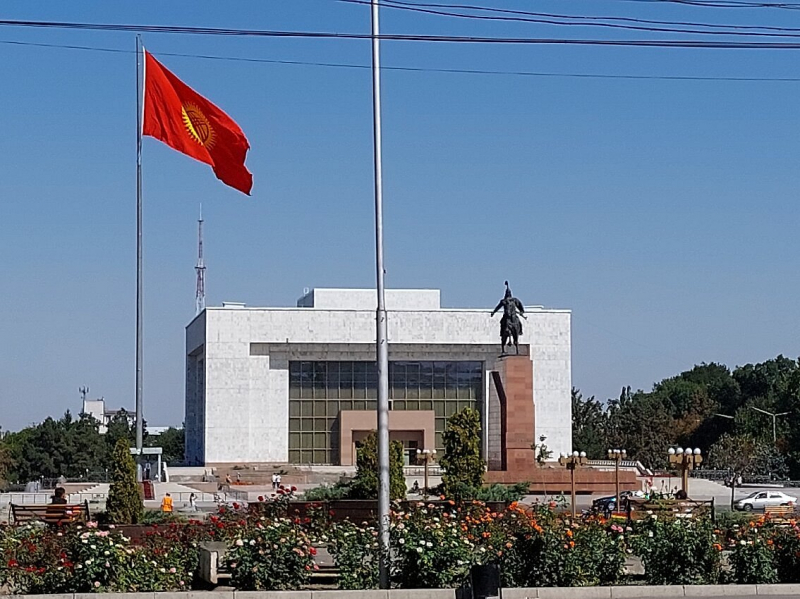
https://www.tripadvisor.com/ 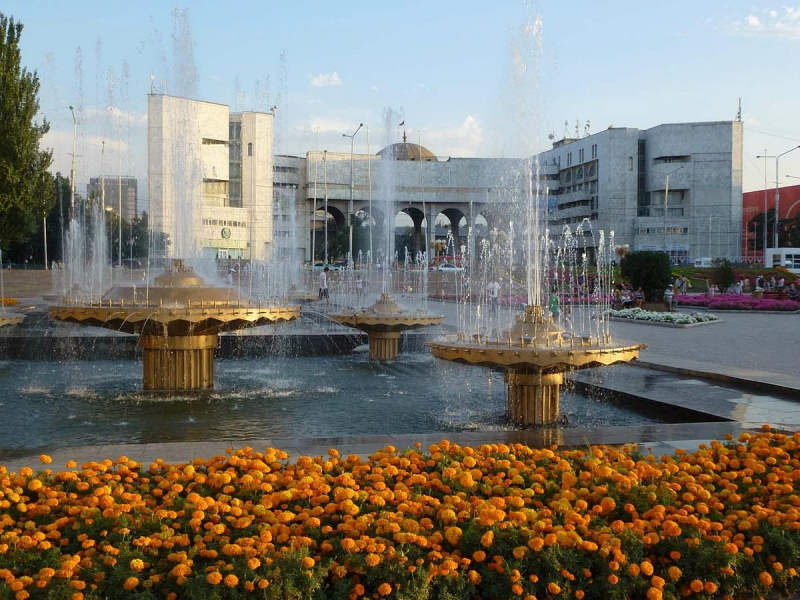
https://www.tripadvisor.com/ -
One of Karakol's biggest attractions is the Holy Trinity Russian Orthodox Cathederal. The Russian community of Kyrgyzstan created this religious monument in the nineteenth century. The church's history began with the founding of Karakol in 1869, when the first Russian residents established a tiny church on this site. It was, however, destroyed by an earthquake in 1876. The construction of the new church began in 1895 by architects from Verniy (Alma-Ata).
The church's roof is surmounted by five domes, and the walls are composed of wooden logs that are ornamented with carvings and colorful paintings. Following the October Revolution, as part of the Soviet anti-religious drive, the church was closed and eventually repurposed into a children's sports school. The school was housed in this structure until 1986, when it was decided to rebuild the church and turn it into a local history museum.
The church was repaired during a three-year period, but due to the collapse of the USSR, the museum was never established, and the restored edifice was occupied by pastors in 1992. The icon of the Theotokos of Tikhvin, written in 1897, is one of the church's most important Orthodox sights. Today it is regarded as one of the most beautiful historical sites in Kyrgyzstan you should visit. Tourists are welcome at the Holy Trinity Russian Orthodox Cathederal, however women are recommended to cover their heads with a shawl, which can be borrowed at the door.
Address: Holy Trinity Russian Orthodox Cathedral, Karakol 722360 Kyrgyzstan
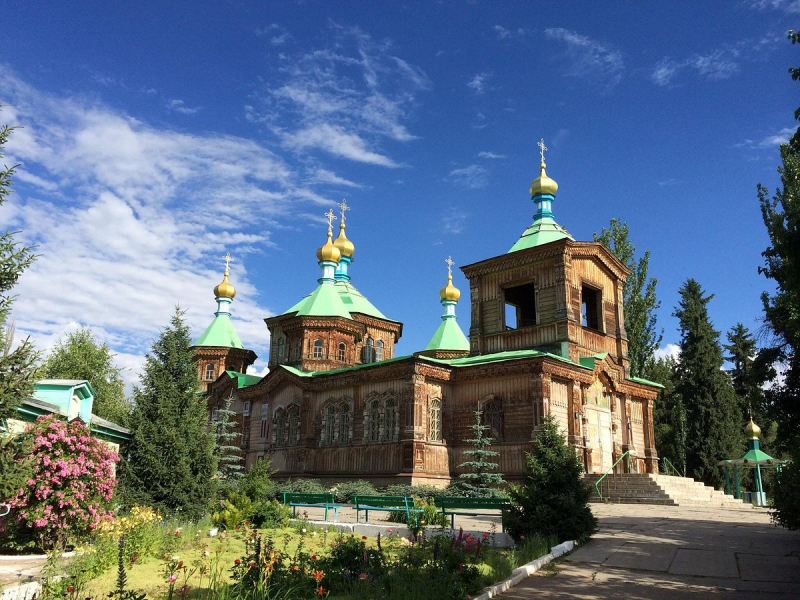
https://www.tripadvisor.com/ 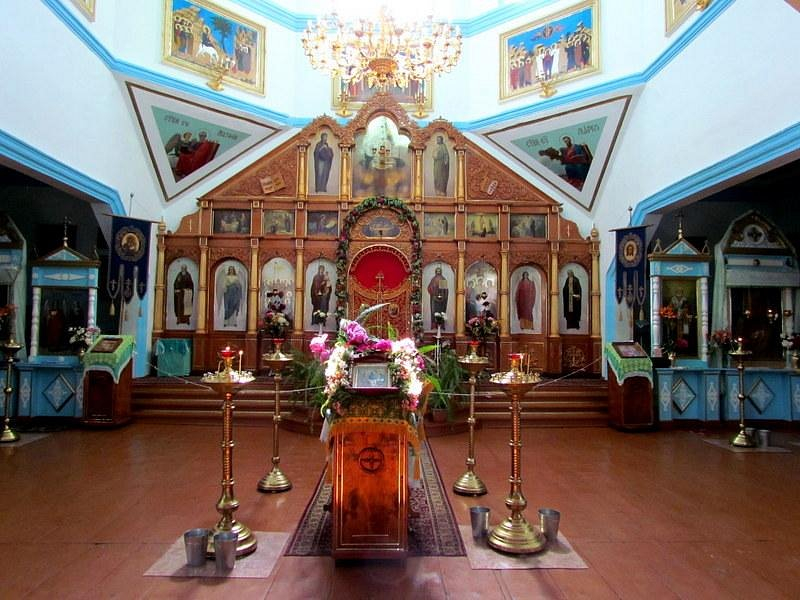
https://www.tripadvisor.com/ -
At the Monument to Manas the Great, a prominently positioned monument in Ala-Too Square, you can admire the majestic statue of the national symbol. The statue, which was erected in 2011 to commemorate the 20th anniversary of the country's independence, depicts the main protagonist of a national epic written in an 18th-century Persian manuscript. The 17 m (55 ft) tall equestrian sculpture, sculpted by Bazarbai Sydykov and cast in Moscow, wields a sheathed sword in his left hand. The statue replaced the previous 12 m (39 ft) tall Erkindik, a woman representing liberty, which had replaced a Lenin statue in 1999. According to the artist, the visage recalls that of late Kyrgyz actor Suimenkul Chokmorov.
The epos "Manas" is said to be one of the Kyrgyz people's most important cultural treasures. This is the world's largest epic, with almost 500 thousand lyrical lines. Aikol Manas, or Manas is the work's principal hero. The monument is placed on Ala-Too Square in the centre of Bishkek. The monument's unveiling (August 31, 2011) coincided with Kyrgyzstan's 20th anniversary of independence. Monument to Manas the Great is considered one of the most beautiful historical sites in Kyrgyzstan.
Address: Ala-Too Square, Bishkek, Kyrgyzstan
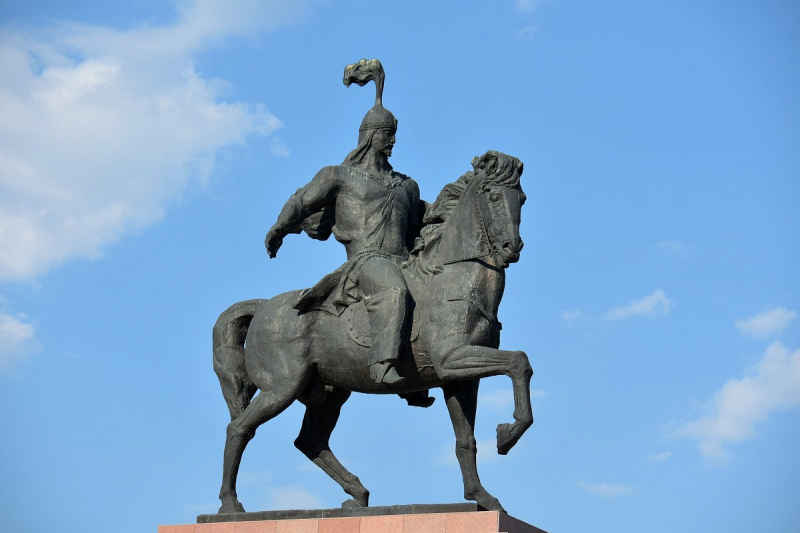
https://www.tripadvisor.com/ 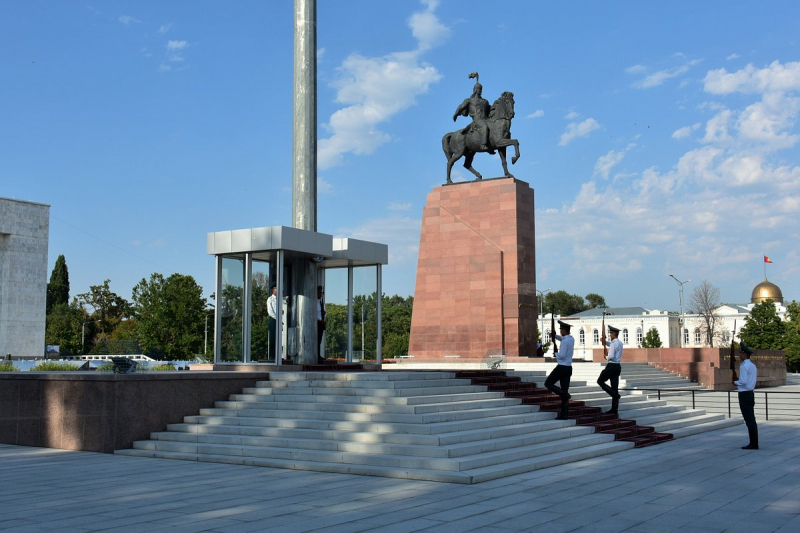
https://www.tripadvisor.com/ -
The Holy Resurrection Cathedral is located a few blocks north of Chuy Avenue at the intersection of Jibek Jolu Avenue, Togolok and Moldo Streets. The original cathedral, which served Bishkek's Russian Orthodox community, opened in 1947. In 2017, two years of building renovations were finished (although there is still some work ongoing in the courtyard). The end result is a beautiful Romanesque structure in white stone with blue roofs and gold onion domes. The architecture combines neo-Gothic characteristics like gables and dentals with Moorish touches like large ceramic tiles and pointed window arches. The church is crowned by an eight-sided bell tower that stands roughly 30 meters tall. The vaulted interior is simple (no pews), well-lit by arched windows, and has a mild incense aroma. Behind the alter is a three-tiered iconostasis with images of saints and angels. Filigreed gold doors lead to an inner sanctuary, and the walls are adorned with stations of the cross.
The serene interior enables visitors to reflect on the cathedral's and its congregation's spiritual power. Icons can be purchased from the gift store. The courtyard surrounding the cathedral is a tranquil respite from the hustle and bustle of the city. It has a stone sculpture of Issyk-reverend Kul's Confessor Heraclius in a contemplative stance. The cathedral is open to the public daily from 7.30 a.m. to 8 p.m.
Address: Zhibek-Zholu Avenue, 497, Bishkek 720000 Kyrgyzstan
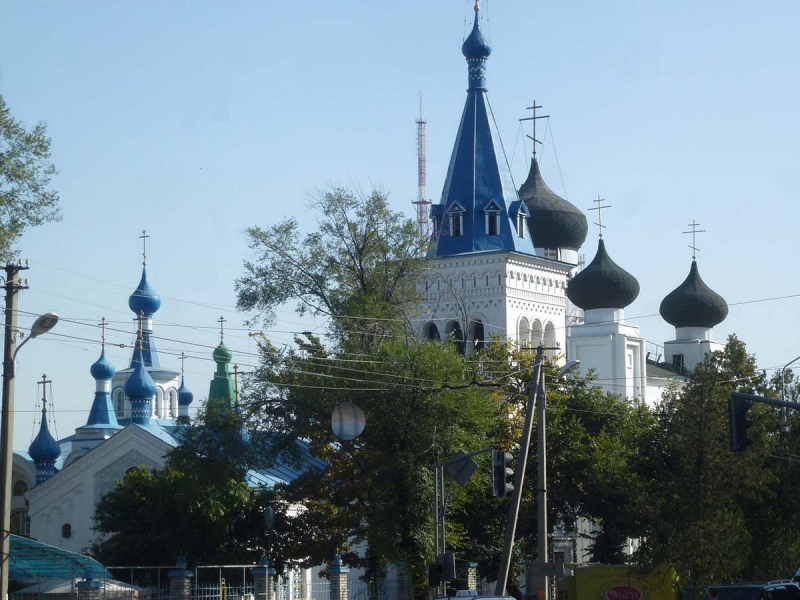
https://www.tripadvisor.com/ 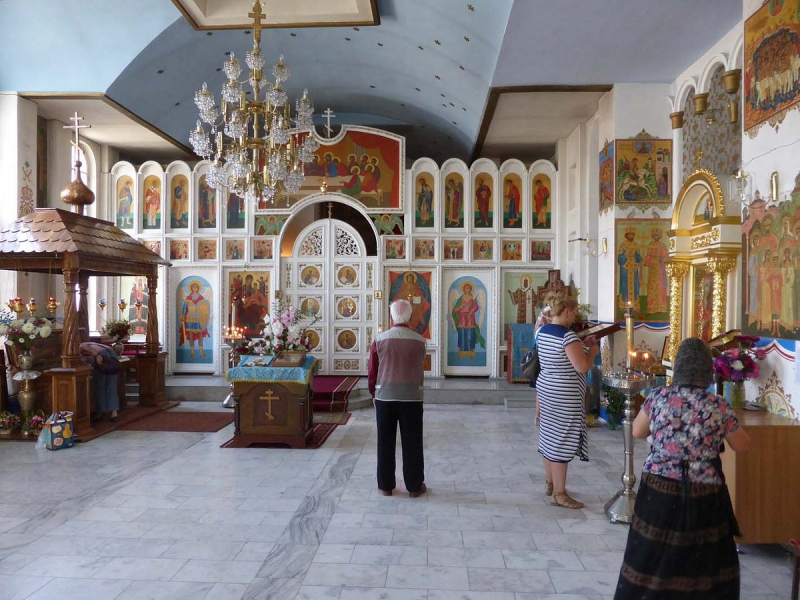
https://www.tripadvisor.com/ -
The Burana Tower is a huge minaret in northern Kyrgyzstan's Chüy Valley. It is located around 80 kilometers east of Bishkek, near the town of Tokmok. The tower, along with burial markers, earthworks, the foundations of a castle, and three mausoleums, are all that remain of the ancient city of Balasagun, which was founded by the Karakhanids towards the end of the 9th century. The tower was constructed in the 11th century and served as a model for future minarets. Visitors can reach the top by an outdoor staircase and a steep, winding stairway inside the tower. It is one of Central Asia's oldest architectural structures and among the most beautiful historical sites in Kyrgyzstan.
Burana Tower was originally 45 meters (148 feet) tall. However, a succession of earthquakes over the years caused substantial damage to the structure. The top half of the tower was demolished by a large earthquake in the 15th century, lowering it to its current height of 25 m. (82 ft). In the 1970s, a refurbishment effort was carried out to rebuild its base and fix the tower's west-facing side, which was in risk of collapsing.
The entire site, including the mausoleums, castle foundations, and tomb markers, now serves as a museum, and there is a modest building on the property that houses historical information as well as objects discovered at the site and in the surrounding area.
Address: Balasagun, Kyrgyzstan
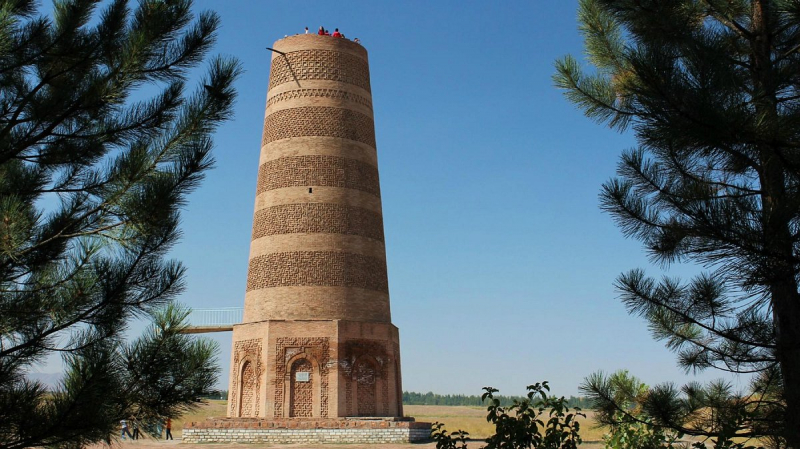
https://www.tripadvisor.com/ 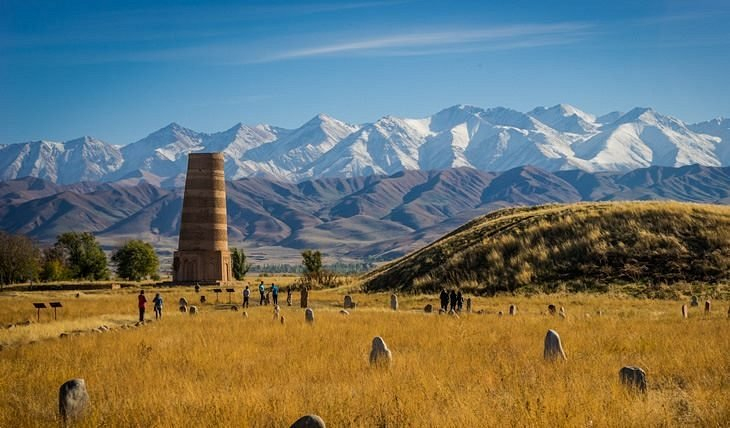
https://www.tripadvisor.com/v


























